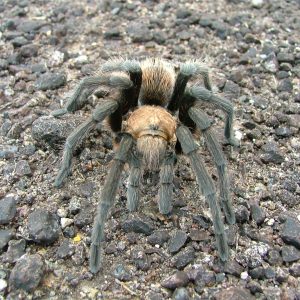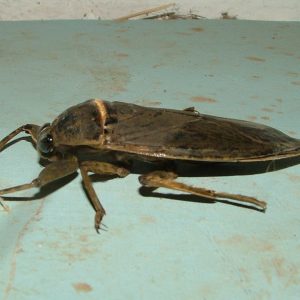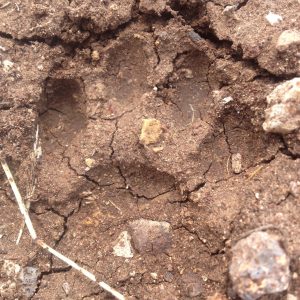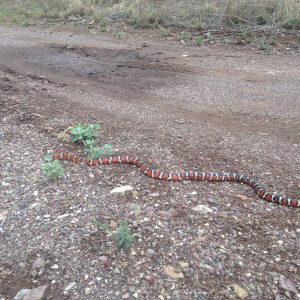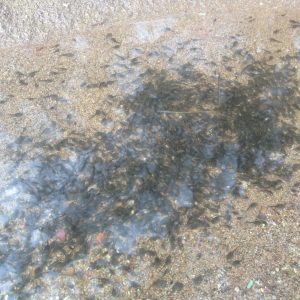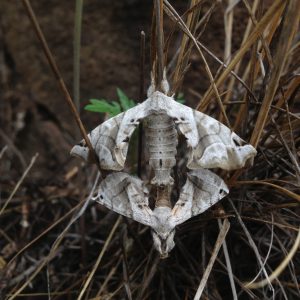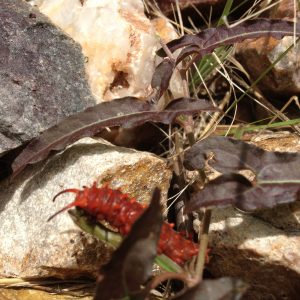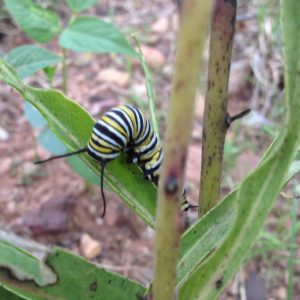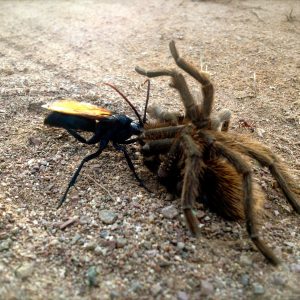Here at Pine Hill Preserve my mentor Graciela has been keeping me busy on a variety of projects. These have mainly centered around two of the rare Gabbro soil plants, El Dorado bedstraw, Gallium californicum subsp. sierrae and Bisbee peak rush rose, Crocanthemum suffrutescens. I also spent several days helping the engineering technician survey some dry ponds at the Cosumnes River Preserve for a topographic map.
El Dorado bedstraw is a diminutive plant that grows in the shady under story of oaks and sometimes chaparral shrubs. The reproductive biology of El Dorado bedstraw is not well known. In the spring we examined the flowers of one population and flagged them with labels of male, female, or hermaphrodite. The literature says that El Dorado bedstraw is dioecious, meaning separate male and female plants, but these plants had not read the books, as many had both male and female parts. We returned to look at their fruits. We found that many plants had no fruits, some had small fruits, and some had much larger fruits. However, upon dissection it appeared that the small fruits did not have anything resembling a viable seed. If only the large fruits contain a viable seed, then this species barely produces any seeds at all, and perhaps primarily propagates itself vegetatively. Later we crawled through chaparral to a North facing slope with a good population of El Dorado bedstraw growing under black oaks and Toyon, and we collected some seeds. Graciela will take these to a local nursery to see if they can be propagated. She has also taken vegetative cuttings to this nursery, and it will be helpful to know which method is more successful if future disturbance requires mitigation and restoration of this species.
The small number of mature seeds also raises some questions. What pollinates this plant? Is there a lack of pollination? Is there herbivory of the seeds? Graciela recently attended a native bees workshop and is very excited about bees and other pollinators. She sent me back to the bedstraw to search for insects that might be associated with it. However it is now extremely dry and there was very little insect activity, and none of it seemed to be associated with the bedstraw, so this may need to be done again next spring or early summer. Graciela has also proposed that we come up with a grant proposal for a pollinator study for all of the Pine Hill Preserve rare plants. This project that will allow me to learn a lot about pollination biology, as well as how to acquire funding for projects, which I am realizing is probably the most important aspect of this field.
I have also been trying to work out the mystery of the Crocanthemum (formerly Helianthemum). Graciela and I have been assuming that all of the plants at Pine Hill Preserve are the rare plant Crocanthemum suffrutescens, Bisbee peak rush rose. However, the more keys and descriptions I look at, the more convinced I am that we have Crocanthemum scoparium, which is common, although the keys can be ambiguous and we may have both or even hybrids. The California Native Plant Society is working on re-listing suffrutescens because it has recently been revived as its own species. I have sent specimens from PHP to the author of a new Flora of North America, who is mainly responsible for bringing back suffrutescens as a seperate species, and hopefully by the time I write my next blog post I will be able to say which species is at PHP. This whole process has made me realize that taxonomy is a dynamic science and that it is hard to clearly define species, subspecies, varieties, etc. Considering to the uniqueness of the Gabbro soil community, I wouldn’t be surprised if we have a plant that is quite different from other described variations of this genus.
Joe Broberg
BLM Mother Lode Field Office




















